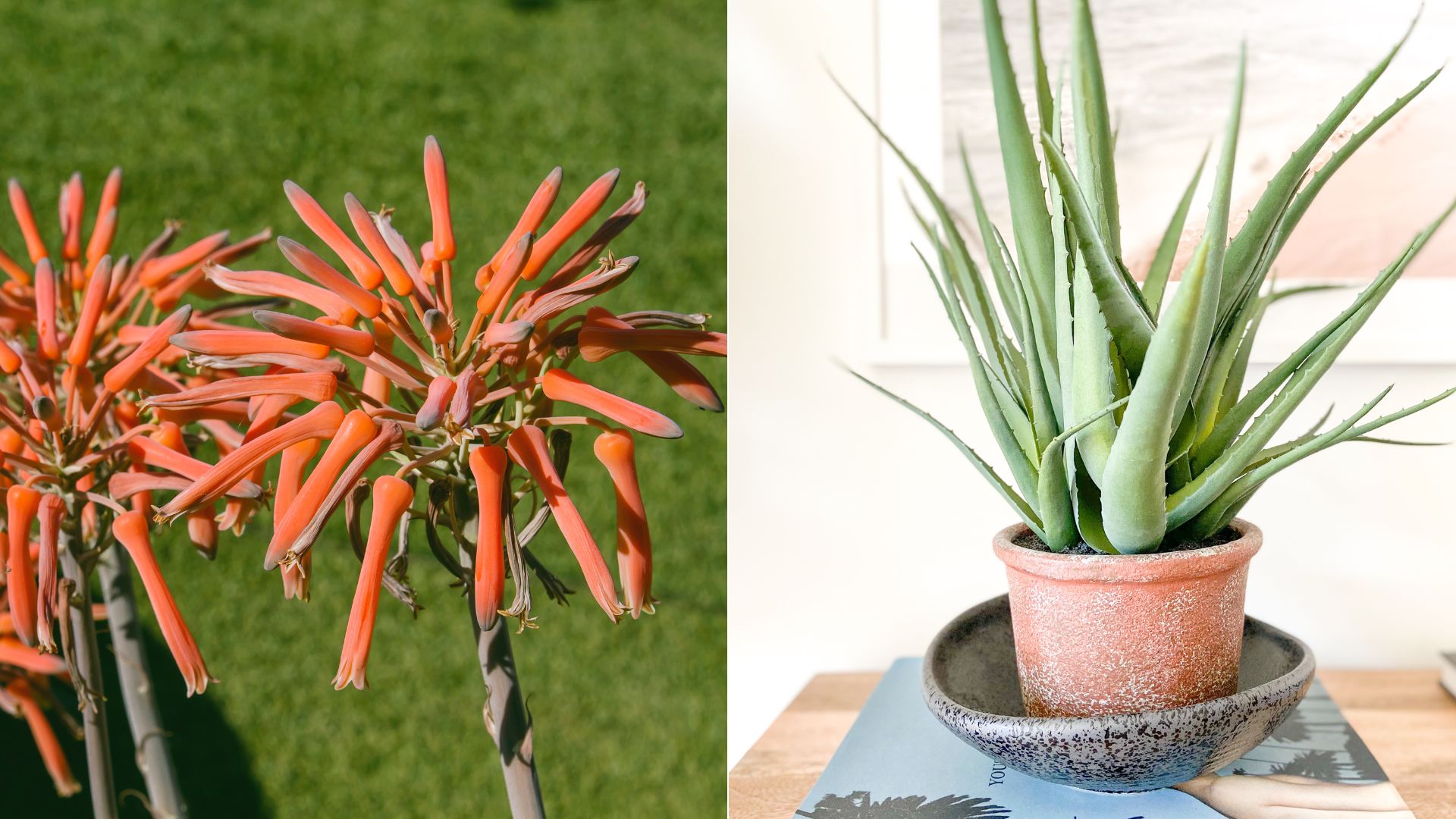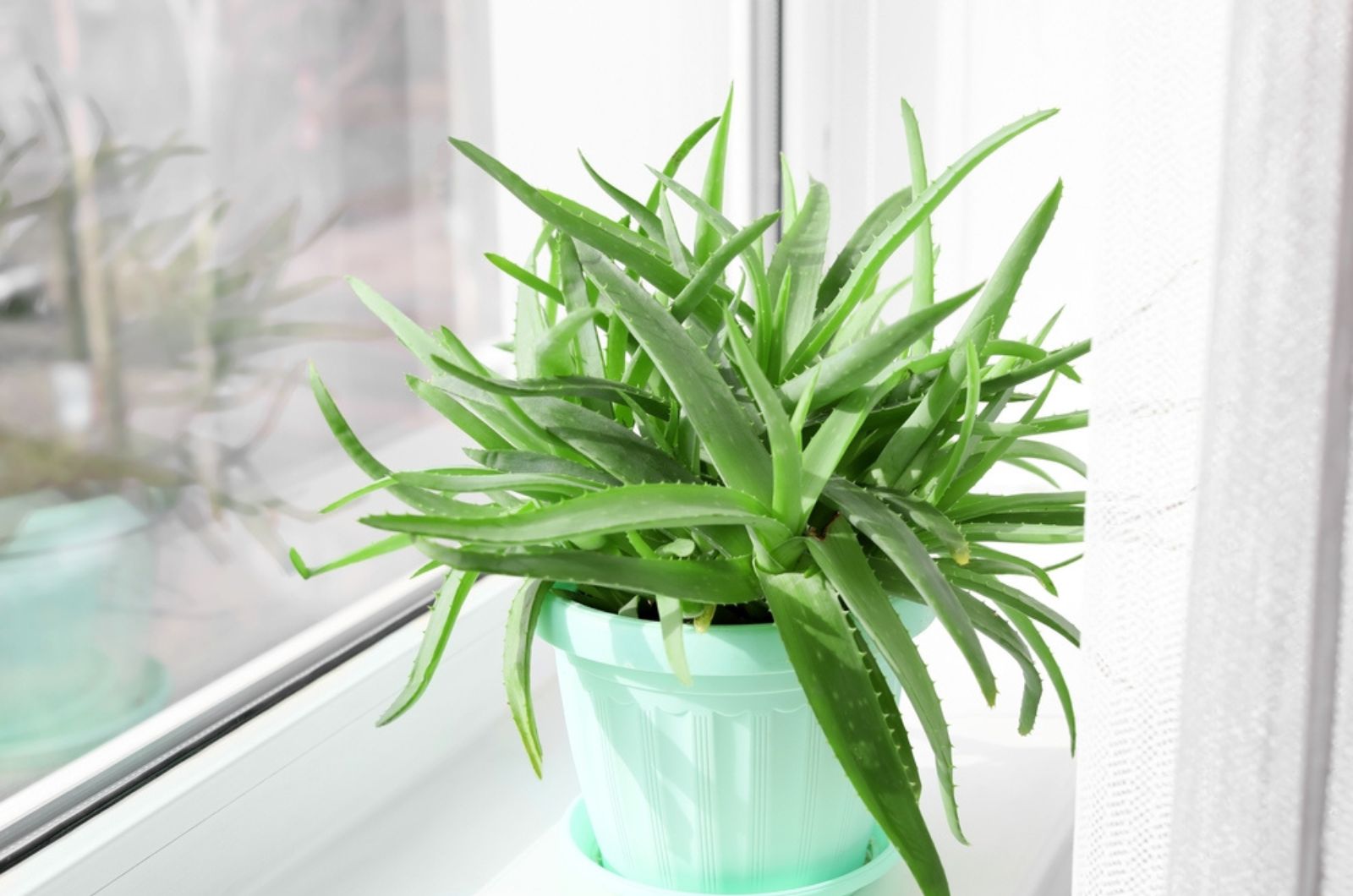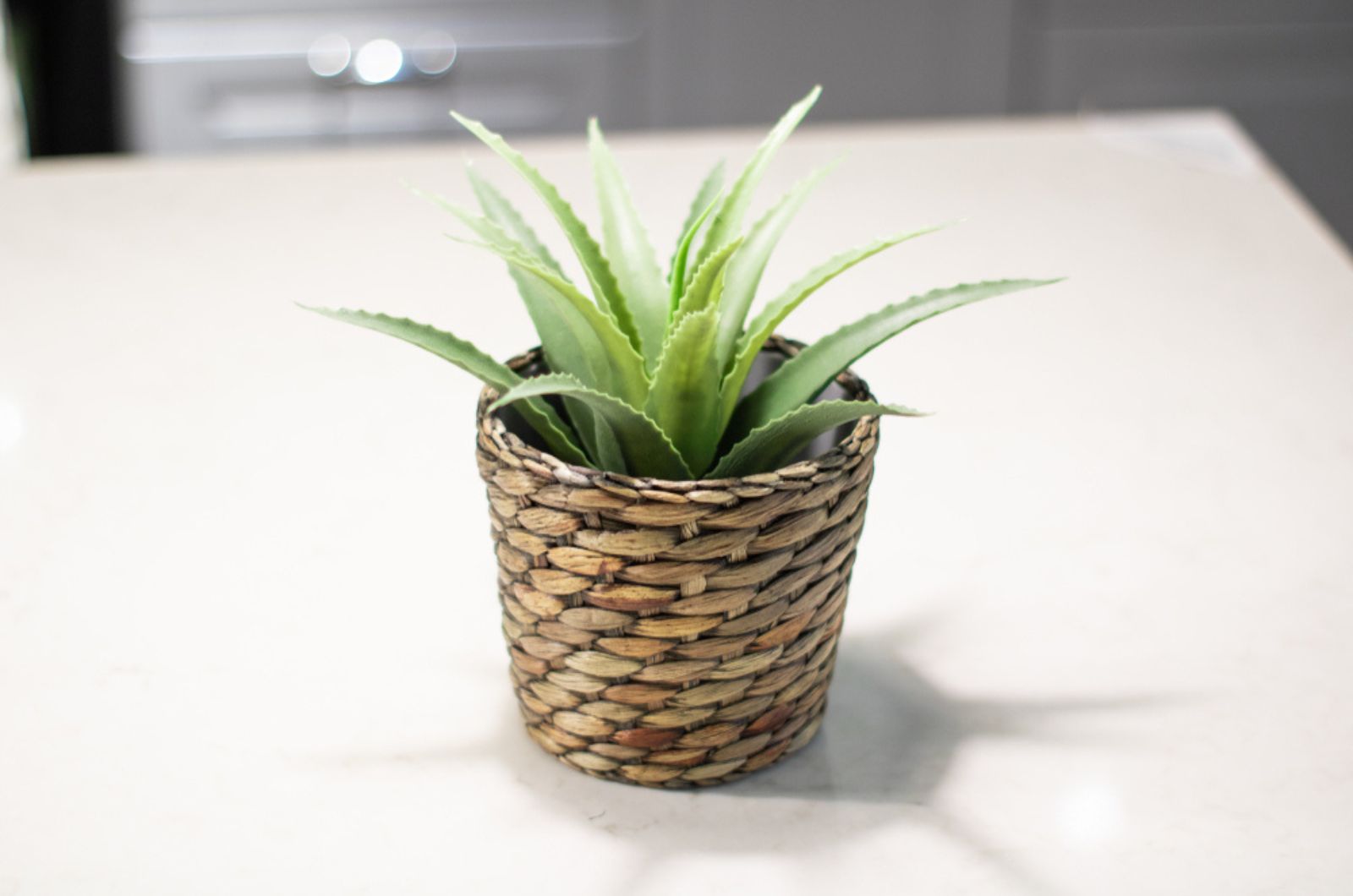It doesn’t get much easier than tending to an aloe vera as a houseplant. It doesn’t require too much water or fertilizer, and only needs well-drained soil and some sunlight to thrive.
However, if you want it to flourish and look its best, you will have to take good care of it.
Of course, keeping its fleshy foliage green and plump is easy, but encouraging your aloe plant to flower is another story.
Managing this outdoors, in its natural habitat, isn’t that big of a deal, but doing it indoors is a true accomplishment. In fact, it happens so rarely that we have to ask the question: can aloe vera bloom indoors?
Let’s find out!
Short Answer
There are numerous types of aloe plants that produce gorgeous blossoms, but can it be done indoors?
Aloe vera grown as a houseplant flowers extremely rarely, so you can count yourself lucky if you’re expecting a blossom on your own.
And that’s because it is fairly difficult to mimic its native environment indoors. But it can be done!
First, you have to make sure your aloe plant is mature, so at least 4 years old. Then, give it plenty of bright light, warm temperatures, and a little bit of water to try to encourage it to flower.
Of course, just because your aloe vera doesn’t produce blossoms doesn’t mean it’s unhealthy. Keep it in the right conditions and it might just reward you with gorgeous fiery inflorescence.
Long Answer
There are many things everyone with an aloe should know, but it’s no secret that if you keep this plant in ideal conditions, it will flourish.
Even more, it may just produce flowers when the time comes.
Of course, don’t be disappointed if you’ve done everything right and your plant still doesn’t bloom. They’re finicky like that and you might have to wait a decent amount of time before you notice their flower.
And sometimes they’ll bloom on their own, without you doing anything special.
But if you want to stimulate it in order to produce flowers, here are some things you can do!
Flower Expectations
Gardeners rarely expect to see flowers on their aloe vera, and some may not even know that this plant can produce them.
The main reason for this is that only mature aloe veras can blossom and it takes them at least 4 years to get to this stage.
And on top of that, they need ideal growing conditions, like those you find in their native arid habitats. That means the perfect balance of nutrients, sun exposure, temperature, and moisture. And even if you do all that, they still might not blossom.
But if you’re lucky enough, about 4 years into growing your aloe, you may notice a strange new growth resembling a stalk. This will develop into a red and orange inflorescence that completely transforms the look of your plant.
Aloe vera blooming time is in summer and if you do get it to bloom, you’ll be able to enjoy the fiery flowers for weeks on end.
P.S. They only flower once a year, so make sure to take the best pictures as soon as you notice these blossoms.
Sun Exposure
Aloe veras come from arid climates where they get plenty of sunlight throughout the day. For that reason, the number one enemy of your plant’s bloom cycle is lack of sun.
That’s why you should place your aloe vera in a location where it gets bright sun throughout the day. However, too much sun exposure can lead to a sunburnt aloe vera, so make sure to keep your plant a couple of feet away from your brightest window or close the curtains.
As your plant adjusts to more light, you can gradually increase it and move it closer to the window.
Just remember to rotate your plant so that each part gets the same amount of light and grows equally well. This will also help you avoid burning your aloe.
Of course, the sun’s position may not be exactly the same in winter as it was in summer, so you might need to move your plant around your home throughout the year.
Watering Frequency
A good rule of thumb when it comes to watering aloe veras is to wait until the soil completely dries out before irrigating it again.
This will ensure you don’t see signs of an overwatered aloe plant any time soon.
You might give it a bit more moisture in the beginning, but you’ll soon learn to read the signs your plant is sending when it’s dehydrated. You’ll see that the leaves are less plump and perhaps starting to wilt a bit. That’s your cue to give it more water.
Also, this plant enters dormancy in winter and won’t need as much moisture during this season as it does in summer. That’s why it’s always best to test the soil and see whether it is dry before watering it.
In fact, always check the substrate before hydrating your aloe vera since that’s one of the best tells your plant needs additional moisture.
Keeping Aloe At The Right Temperatures
These plants flourish in temperatures between 65-85ºF, but they can survive in a wider range than that. Aloe vera temperature tolerance is between 40-100ºF, although anything above 85ºF will cause heat stress.
If you’re trying to encourage your plant to flower, I’d keep it at around 65-75ºF because they will be neither too hot nor too cold.
A good way to monitor the temperature is by installing a thermometer right next to your aloe plant since that will show you accurate conditions.
Also, you should avoid keeping it in a drafty spot where sudden temperature swings occur, such as near old windows, doors, AC vents and heaters, etc., especially when the season’s are changing. Or at least move it somewhere else when you’re venting.
P.S. These plants hate the humidity that comes with high temperatures, so make sure to always keep your relative indoor moisture low if you want your aloe vera to flower.
Applying Fertilizers
If you’re doing all this and still don’t see any sign of flowering in your aloe, consider applying some fertilizer.
The key is to use the right plant food. You can’t go wrong with a regular succulent fertilizer, well-balanced plant food, classic houseplant fertilizer, or even a high-phosphorus fertilizer to induce blooming.
(But I’d start with the basics and succulent or cactus plant food before experimenting.)
Also, don’t feed this plant too frequently. Fertilize it twice a year; once in spring, when it wakes up from dormancy, and then again in summer.
And if you’re using a slow-release fertilizer that lasts a long time, you can apply it only once and then go from there.
It’s better to feed this plant a little less because one of the common reasons aloe plants turn brown is overfertilizing.
Finally, water your aloe vera immediately after fertilizing it to prevent the fertilizer burning the roots and to make the nutrients available to your plant at once.
Final Thoughts
Aloe vera is one of those low-maintenance plants, which makes it the best choice for beginners and busy bees. However, it still requires some care, especially if you want it to flower.
For that reason, you should be nitpicky about its environment and give it plenty of light, just a little bit of water, keep it at warm temperatures, and fertilize it twice a year at most.






